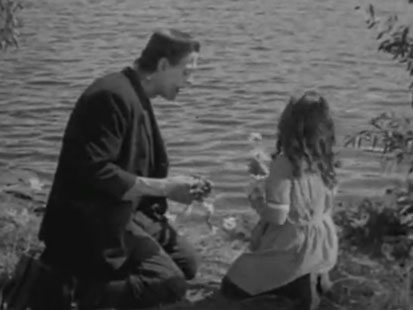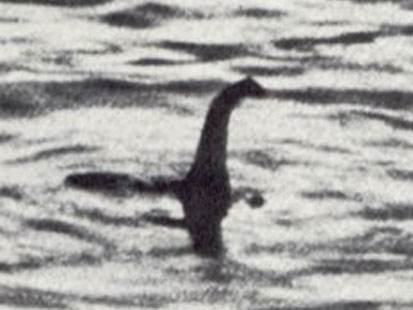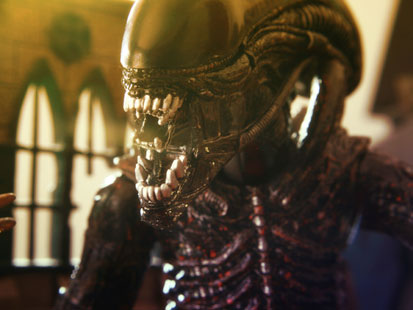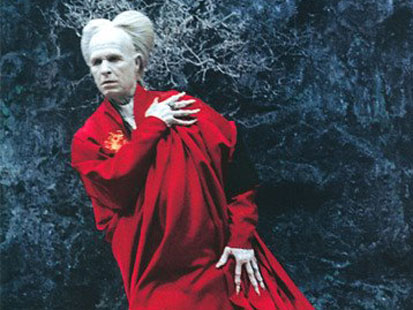From Frankenstein's Monster to Dracula: The Creatures That Shaped Guillermo Del Toro's Imagination
Just in time for Halloween, Guillermo Del Toro gives up his top 5 monsters.
Oct. 24, 2012— -- Beetles, cockroaches, flies, and spiders are amongst the most reviled insects on our planet. But while many people have a natural aversion to them, some writers and scientists study these bugs to unlock important secrets about our humanity. That is why filmmakers like Guillermo del Toro have elevated them from lowly creatures to powerful supernatural characters who not only command our respect, but could also personify the highest of human values.
"Who says insects aren't God's favorite creatures?" reflects one of del Toro's antagonists in his 1993 horror vampire film Cronos. "Christ walked on water, just like a mosquito. The matter of resurrection is related to ants, to spiders. They can remain inside a rock for hundreds of years until someone comes along and frees them."
The film reminds viewers that humans can be just as ugly as insects, predatory, natural adversaries, who compete for the same resources and territories. But while many people might find this comparison abominable, del Toro sees an inner beauty in the extreme circumstances that transform humans into monsters. No matter how terrifying we may become, our grotesqueness reveals the circumstances and characteristics that make us most vulnerable—the heavy choices that define our personality, the irreversible consequences that make or break our destiny.
For del Toro, monsters compel us to confront "the dark terrifying truths" that lurk inside of us. They force us to question our science and faith. And in a way, our fascination with supernatural creatures can make us feel more empathetic, compassionate, because each monster is like a psychiatric profile of humanity.
"Monsters like Godzilla," del Toro told me recently at the New York Comic Con, "can awaken a sense of duty and honor, help us address death, and admire the way that Japanese people can see in such an enormous creature a figure of love and sympathy."
During NY Comic Con, del Toro reminded Latino fanboys and girls that monster stories are metaphors for our culture and identity. As a Mexican, the director explained how masked superhero wrestlers like Santo and Blue Demon, also known as "El Demonio Azul," introduced him to a world of monsters, zombies, vampires, and mad doctors. Their adventures inspired del Toro to explore other supernatural stories, and in Mexican magazines like Tradiciones y Leyendas de la Colonia, he discovered how much larger, sometimes unexplainable, realities are hidden behind the things that we hold to be true.
"[The magazine] described the true legends of the [former] Spanish colony," del Toro said. "Many of the stories focused on taboo themes like incest. They also described the Inquisition's merciless torture and murder, the darkest side of humanity." Del Toro found this dark side irresistible. And the deeper he looked into these distorted characters, the more beautiful they appeared to him. Ultimately, he would set out to capture their conflicting existence in films like Cronos, The Devil's Backbone, Pan's Labyrinth, and Hellboy, among others.
Del Toro's next supernatural thriller, Mama, due January 18, 2013, tells the haunting tale of two little girls who disappeared into the woods the day that their parents were killed. When they are rescued years later and begin a new life, they find that someone or something still wants to come tuck them in at night. The movie stars Jessica Chastain and Game of Thrones' Nikolaj Coster-Waldau.
Every monster, every horror story that del Toro read as a boy, is like a reference point on a map that outlines his diverse cultural influences. So with Halloween and El Dia de los Muertos approaching, we asked him to list five monsters that have shaped his filmmaking and identity.
But beware, for the list – presented in no particular order - may inspire you to explore your own dark side…
Frankenstein's Monster
Considered by del Toro to be the "patron saint of the freaks," the Wretch from Mary Shelley's classic novel (and the central figure in the 1931 James Whale film) personifies our deepest yearning for companionship and acceptance. He is both a metaphor for the powers of science and nature – assembled from old body parts, strange chemicals, and brought to life by a "mysterious spark." At eight feet tall, he towers above ordinary men and women like a giant, but has the mindset and sensibility of a baby. His physical grotesqueness and soft, compassionate demeanor make him universally appealing to anyone who has ever felt alienated or alone.
The Loch Ness Monster
This mythical aquatic creature, thought to have originated in Scotland, is the perfect metaphor for any hidden truth or dark secret that is dormant in our unconscious. It compels us to look deep into the gray waters of the Loch Ness, penetrate beneath our reflection on the surface, and discover what lurks inside. This monster can personify the ugliest distortions of our imagination, and our untamed appetites. But it can also remind us of the awesome power of nature.
Ridley Scott's Alien
Even though many creatures and their archenemy heroes are often depicted as strong masculine figures, Scott's 1979 film was among the first to present a strong action heroine (Sigourney Weaver) in an otherwise male-dominated genre. James Cameron's 1986 sequel empowered female characters even more by depicting the aliens as a matriarchal society that was ruled by a single fertile queen. While these creatures may appear grotesquely different from humans, they are very much like the insects in del Toro's Cronos or Mimic, which personify our desire to live eternally, to propagate our species.
The Bride of Frankenstein
Despite Dr. Pretorius' efforts to create a mate for Frankenstein's monster in this 1935 classic horror film, the bride repels her abominable counterpart with an ear-piercing shriek. Her scream is one of the most famous in silver screen history, and along with the silver lightning streaks in her weirdly-stylized hair, it is emblematic of her indomitable will, which refuses to be subjugated as a sexual or romantic partner for any man. Even when science can exploit nature, the Bride of Frankenstein shows viewers that individual preferences are unique and cannot be engineered.
Bram Stoker's Dracula
Having fought bravely against the Ottomans to defend "God's church," Vlad Dracula vows to avenge his wife with "all the powers of darkness" after she was tricked into committing suicide in Francis Ford Coppola's 1992 film Dracula, which is closely based on Bram Stoker's gothic novel. As a vampire, his eternal loneliness makes him both vulnerable and sympathetic. Even though he possesses supernatural powers that can change him into different animals and make him stronger than any ordinary man or woman, his condition as a predator alienates him from society. Dracula is much more that a one-dimensional monster. He is genuinely tortured by shame and failure, and personifies our determination to defend our reputation and honor.
What is your favorite monster?